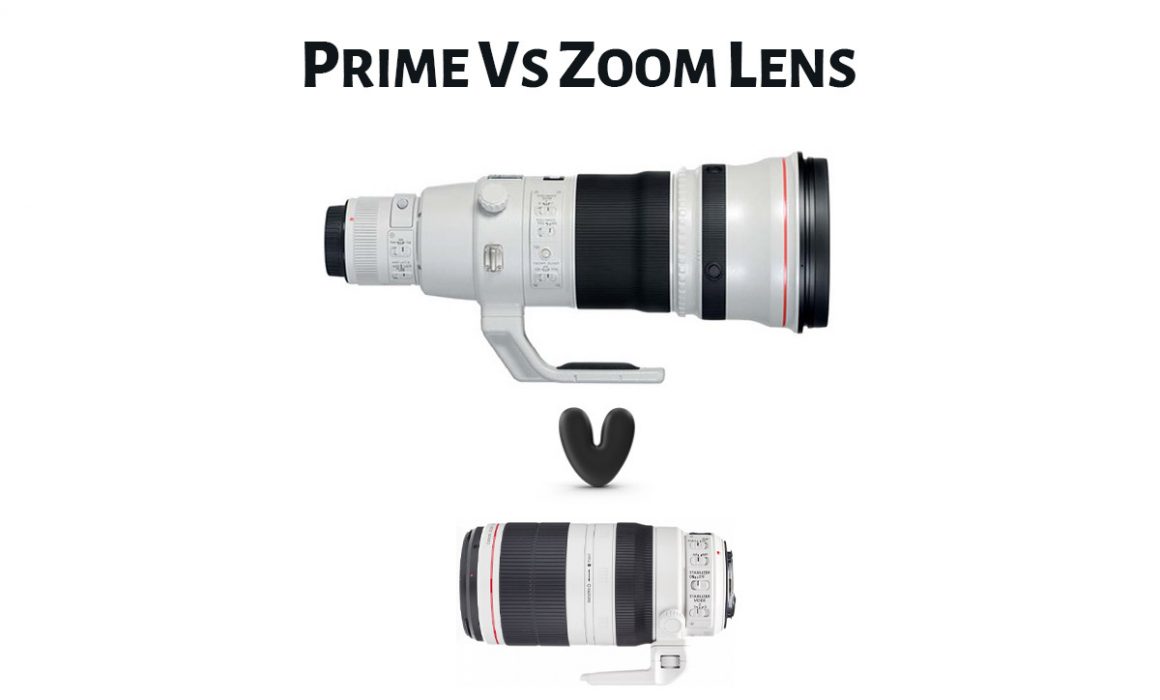Prime Vs Zoom Lens- Which is Best?
Based on the focal length feature, there are two varieties of camera lenses available in the market. One is called “Prime lens” whereas the other one is called the “Zoom lens“. In this article, we will see the different features of Prime Vs Zoom lens.
If you are looking to buy a new camera lens then this would help you to make a decision on whether to go for a prime or a zoom lens.
What is a Zoom Lens?
If your camera lens supports variable focal lengths then it is called a “Zoom Lens”. Here you can change the angle of view by rotating the zoom ring. If you rotate the zoom ring in the clockwise direction then you are doing a “Zoom In”, which increases the focal length thereby reducing the Angle of View. If you rotate in the opposite direction, you are doing a “Zoom Out”. It decreases the focal length thereby increasing the Angle of View
Lenses like Canon 70-200mm f4 L IS lens, Canon 18-55 f3.5-5.6 IS USM lens are few examples for Zoom lenses.
What is a Prime Lens?

Camera lens which comes with a fixed focal length is called as a “Prime Lens”. Here, you will get only one angle of view. So, if you want to change the angle of view, you will have to move around. This may not be possible in all situations. You will not get the options to zoom in or zoom out optically in this lens.
Lenses like Canon 50mm f1.8 lens and Canon 400mm f2.8 L IS III lens are few examples for prime lenses.
Prime Vs Zoom lens – The Differences
1. Cost 💵
Cost is the deciding factor if you are doing photography for a hobby. Prime lenses would be costlier when compared to their zoom lens counterparts. So, most of the hobby photographers tend to go with the zoom lens when the choice had to be made between prime Vs zoom lens.
If you have just started photography, I recommend buying a zoom lens initially. You can go for a prime lens once you have learned your camera properly. The 50mm f/1.8 lens is the cheapest prime lens available in the market. It costs around 110$.
2. Flexibility
Zoom lens gives you the flexibility to vary the focal length. This helps you to improve your image composition. In the case of the prime lens, you need to move around since the focal length is fixed. You can use the zoom lens to capture a variety of scenes by varying the focal length.
If you have an 18-55mm lens then you can use the lower focal lengths to capture landscape photos and the higher ones to capture people and portraits. So, a zoom lens scores when it comes to flexibility factor.
3. Quality

You can never match the quality of a prime lens with a zoom lens. A prime lens is well known for their image quality. So, if you are looking for sharp and crisp images then invest in a prime lens.
All professional photographers would be definitely having a prime lens in their kit.
4. Maximum Aperture Opening
You can get a bigger/wider aperture if you choose a prime instead of zoom. So, a prime lens can get you a shallow depth of field. This is good for isolating the distracting backgrounds in the scene.
For example, I can get an aperture up to f/4 on a 500mm lens if I choose a prime. Currently, zoom lens comes with a maximum aperture of f/5.6 at 500mm focal length. So, you will get an additional stop of light with a prime.
5. Size and Weight
In general, prime lenses are heavier than the zoom lenses. If you are into wildlife photography then you have the options to go for a prime lens like the 500mm or 600mm one. The other option is to go for a zoom lens like 100-400mm or a 200-500mm lens.
If you compare these then definitely prime lenses are heavier. So, when it comes to weight, zoom lens wins in the battle between prime vs zoom lens.
6. Low Light Performance 🌆

You can get a wider aperture with a fast prime lens. It helps you to photograph in low light conditions. If you use a zoom lens then you will have to settle for a lower Aperture, which allows only less light to pass through. So, you will have to bump the ISO value to get a good shutter speed.
The same scene can be shot in a lower ISO value with the fast prime lens. So, prime wins when it comes to low light performance in the battle of prime Vs zoom lens.
7. Bokeh
When it comes to the quality of “Bokeh”, the prime lens is a clear winner in the battle of prime Vs zoom lens. You will get a good bokeh with a prime lens because of the arrangement of internal elements in the aperture. You will get nice circular bokeh patterns in the out of focus areas.
The shape of the Bokeh will not be that good in the case of a zoom lens. So, go for a prime if you are looking for a bokehlicious image.
Now, the difference between a prime lens and a zoom lens is quite clear. You can easily finalize your decision on lens selection.

